Martin Edwards's Blog, page 60
April 4, 2022
Reader, I Buried Them by Peter Lovesey - review
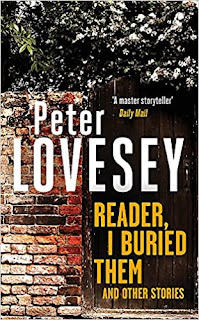
I had an advantage when coming to review Peter Lovesey's new collection of short stories, Reader, I Buried Them. A number of the stories included appeared previously in anthologies that I've edited over the years. It's always a great joy to receive a submission from Peter. The quality is high - that's a given - but what I love particularly is the sheer variety and the consistent enjoyability of his writing. There are plenty of fine examples in this book.
Peter is a brilliant ideas man. Fresh concepts spring to his fertile imagination with astonishing consistency. In a pleasing introduction to the book, he tells a good story about his first published short story, 'The Bathroom', which earned the admiration of Ruth Rendell and her encouragement to continue with the short form as well as his novels. The story is included, and so is a splendid companion piece of non-fiction, 'The Tale of Three Tubs', which I featured in my CWA collection of essays about real life crimes, Truly Criminal.
Some of the clever ideas may, I suspect, have sprung from a great idea for a title - such as 'A Three-Pie Problem', featuring Peter Diamond, and also the title story of the book. There are nods to Patrick Hamilton in 'Gaslighting' and to Edgar Allan Poe and Agatha Christie in other stories. The stories vary in length as well in style and one of the very shortest, 'Agony Column' is appealingly jokey. There's an amusing monologue at the end of the book and a comprehensive checklist that will be invaluable for Peter's many fans.
Need I add that I found this book highly entertaining from start to finish? And there was a little bonus when I looked at the back cover. There were three well-deserved encomia. One from Ruth Rendell herself. One from Val McDermid. And one from me. Great company to be in - a company of long-term Peter Lovesey fans.
April 1, 2022
Forgotten Book - Jack on the Gallows Tree
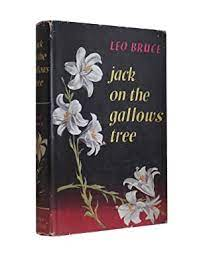
I like Leo Bruce's Sergeant Beef stories, as I've mentioned on this blog a number of times. I haven't, however, talked about his second series, featuring the history teacher and amateur sleuth Carolus Deene. However, the time has come to sing the praises of a 1960 book, Jack on the Gallows Tree. It really is very funny, but at the same time Bruce manages to offer a teasing puzzle about motive as well as whodunit.
Deene has suffered from jaundice and heads off to the resort of Buddington to recuperate. But the real attraction of the place is that there is a teasing puzzle concerning a double murder. On the very same night, two elderly women were strangled. Each was left with a white lily. Plenty of people made have had good reason to kill one of them. But why both, and why on the same night?
There is a lot of pleasure to be had from the minor characters, including the hypochondriac Gilling, the fierce Miss Tissot, the pub landlady who abhors bad language, and two health fanatics, a couple called Baxeter. There are some laugh-out-loud lines. I was also amused by the reference to a book written by Rupert Croft-Cooke - which was Bruce's real name. For good measure, there are witty mentions of two leading crime critics of the day, Julian Symons and Maurice Richardson.
There is one element of the plot that is far from original, but I thought Bruce disguised it pretty well. There are also one or two appealing false solutions and a good climactic scene. For a good blend of mystery and humour, I'd say this book is hard to beat. I really enjoyed it.
March 30, 2022
A Walk Among the Tombstones - 2014 film review
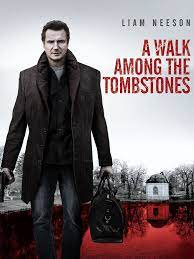
Lawrence Block is one of America's leading crime writers and a winner of the CWA Diamond Dagger. He's not only prolific; he is talented and versatile. More than twenty years ago, I had the good fortune to publish one of his wonderful short stories, 'Looking for David', in an anthology I edited, Whydunit?, and he won an Edgar for it. So I'm not quite sure why it's taken me so long to get round to watching the film of his novel A Walk Among the Tombstones, but I'm glad I did.
The film is scripted and directed by Scott Frank, who was also responsible for the excellent The Queen's Gambit, and this earlier work displays similar virtues of crisp writing. And again Frank benefits from casting a high calibre actor in the lead role. Liam Neeson, who plays unlicensed private eye Matt Scudder does not, perhaps, have as great a range as some actors, but what he does, he always does very well and he's ideal for the role.
A drug addict approaches Scudder and asks him to help his brother, whose wife has been kidnapped and murdered. The brother is a drug trafficker and he's bent on revenge. Scudder declines the job at first, but is persuaded to seek out the kidnappers and learns that they have been responsible for more than one murder. A chat with a cemetery groundsman gives him a lead...
This is a very dark film, set in a New York where it always seems to be raining. The plot is sound rather than brilliant, and the pace is not electric, but Neeson's performance really holds everything together. I always enjoy watching his portrayal of crumpled decency and it's rather a shame that he hasn't appeared in any more adaptations of the Scudder stories.
March 28, 2022
This Deadly Isle
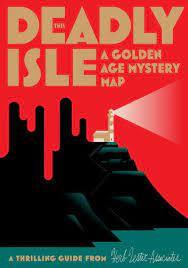
I'm delighted to announce the publication on April 18 of my new Golden Age mystery map of Britain, This Deadly Isle. Yes, it's a bit of a departure from my usual line of work (and it won't be the last such departure this year) and putting the material together really was a great deal of fun. A winter project that I much enjoyed.
This Deadly Isle is published by Herb Lester Associates, who have produced a number of interesting and very attractively designed mystery-related maps, for instance a nice Agatha Christie map by Caroline Crampton, who hosts the excellent Shedunnit podcast. I've covered several of these maps on this blog previously and it was a great pleasure to be asked to prepare one myself.
Golden Age fans tend to like maps. I certainly do and I'm always pleased to find an old novel with a map of the area where the events unfold. In creating This Deadly Isle, my aim was to offer a wide variety of locations across the country and to feature an equally wide range of stories and authors. So the usual suspects are present and correct, but there are also plenty of titles that many people will be unfamiliar with. If you fancy a copy, ordering details can be found here.
I've never created anything like this before and naturally one wonders what the artist will make of the raw material. I'm very impressed by the images I've seen so far and I am really looking forward to receiving my own map...
March 25, 2022
Forgotten Book - Crook O'Lune aka Shepherd's Crook
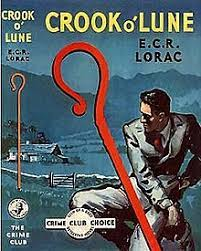
E.C.R. Lorac has become of the most popular authors in the British Library's Crime Classics series, something which causes me considerable pleasure. I am a fan, but it's also true to say that because she was so productive I still have a lot of entertaining reading ahead of me. The latest book I've devoured is Crook O'Lune, published in 1953. It is a good one, and what's more, as I explained on Monday, it prompted a very enjoyable trip to Lorac country last weekend.
At first, though, I wasn't sure if I was going to love the story. It begins slowly -very slowly. Gilbert Woolfall arrives at Kirkholm Station (based on the real-life Hornby station, which no longer exists) and enjoys an exhilarating walk through fell country. He has inherited a house at High Gimmerdale - which is a fictional version of Roeburndale. In the first three chapters, Lorac presents us with a lot of background information, and although it is relevant, it does mean that the pace and mood are rather low-key. I'm surprised she didn't try to integrate the factual material into the story in a more exciting way.
That said, things begin to warm up once Chief Inspector Macdonald arrives on the scene. He is on holiday - and is thinking of buying a farm in the area - but we all know what happens when fictional detectives go on holiday, don't we? Soon there are stories about sheep-stealing and before long there is a case of arson which has fatal consequences.
From then on, we have Lorac at her best. The characters are well-drawn and presented, for the most part, with compassion as well as insight. The setting is especially well evoked and you can tell how much she loved the area in which she lived. The story, too, turns out to be a pretty good one. All in all, it's well worth hunting for this mystery.
March 23, 2022
The Courier - 2021 film review
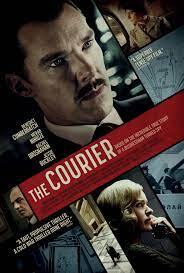
Benedict Cumberbatch is one of my favourite contemporary actors. He seems to enhance any TV drama or film that he appears in. The Courier, a new spy film, is a good example. It's based on a true story that I recall distantly from my early childhood, and his performance makes the most of a competent script by Tom O'Connor (not the Scouse comedian, for sure). The director is Dominic Cooke, who was also responsible for the low-key but interesting On Chesil Beach, which I watched on a plane a few years ago.
Cumberbatch plays Greville Wynne, a British businessman who is persuaded by MI6 (represented by Angus Wright, playing Dickie Franks) and the CIA (Rachel Brosnahan plays Helen Talbot) to assist with a plan to find out about the Soviet nuclear plans with the help of Oleg Penkovsky, a senior official who is contemplating defection.
From what I have read of Wynne, he was a bit of a fantasist, certainly in later life, but he also had plenty of courage, risking his life to assist the security services. If you're not familiar with the story, I won't spoil it for you, but suffice to say that this is a good spy yarn, lifted out of the common run by Cumberbatch's performance. Jessie Buckley is also very good as Wynne's long-suffering wife Sheila. There's a smallish part for the ever-reliable Anton Lesser.
Recent events in the Ukraine have provided depressing evidence that although the Cold War may be long over, international tensions remain and are becoming acute. The events explored in The Courier serve as a reminder of the tragedies that can occur when political vanity and aggression get out of hand. It's definitely worth watching.
March 20, 2022
A pilgrimage to Lorac country
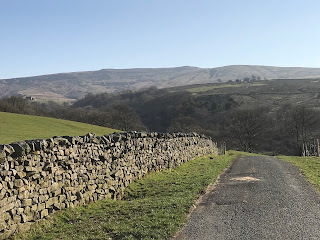
I'm back from a short but exhilarating trip to the countryside E.C.R. Lorac knew so well in and around the north of Lancashire and the Lune valley. The inspiration for this little pilgrimage was Crook O'Lune, her novel of 1953, which is set in the fictitious environs of High Gimmerdale. I'll write about the book in a future Forgotten Books post, but for now I'll concentrate on the visit.

I was lucky to have as my guides on Saturday afternoon Lena and David Whiteley, who have given me a great deal of help in my researches into Lorac's life and work. Lena knew Carol Rivett, who wrote as Lorac and as Carol Carnac, and has very warm memories of her. She and David know the area like the back of their hands and they kindly took me to Roeburndale, which was the real-life model for the setting of the story.
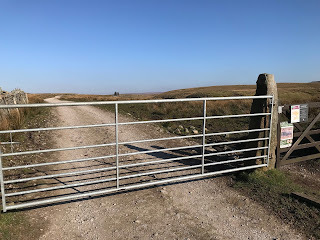
This is sheep farming country (the US title for the book was Shepherd's Crook). Roeburndale is in one of the least densely populated parts of England and it was fascinating to explore the area - our route was eventually blocked by a gate. Two bikers managed to get through, on their way to Slaidburn, which was my next destination. The sat nav, however, took me the long way round. It was a delightful journey as the sun set over the quiet fells.

Lorac often disguises her settings, but in the novel, Chief Inspector Macdonald goes to the Hark to Bounty pub in Slaidburn and enjoys a dinner there. I was pleased to discover that not only is the Hark to Bounty a real pub, they have accommodation too. So we emulated Macdonald (a first-rate steak and ale pie was my choice, not sure what the detective ate!) and went one better, by staying the night as well. It seems from what we were told that Lorac too may have stayed at the Hark to Bounty, I think she must have been impressed, since in truth there was no obvious need for Macdonald to go there; I suspect she just wanted to give them a plug - and why not? Slaidburn is a lovely village and it was good to explore it on a beautiful Sunday morning after a filling breakfast which leaves me needing to lose weight! All in all, a great trip. And an enjoyable book, too.
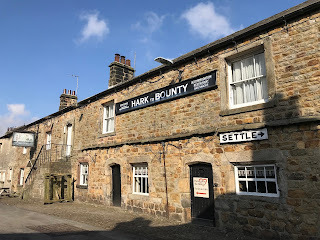
March 18, 2022
Forgotten Book - Dominant Third
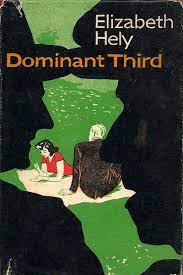
I first became aware of Elizabeth Hely's 1959 debut novel Dominant Third thanks to a laudatory review by John Norris on his excellent Pretty Sinister blog. Some time after that I managed to lay my hands on a modestly priced copy inscribed by the author, but I've only recently got round to reading it. I was tempted to do so after re-reading William Mole's The Hammersmith Maggot. Why? Because Mole and Hely were husband and wife.
Their real names were William and Elizabeth Younger and he was a spy. This novel is dedicated to 'Mole, with love', and it is sad to think that he died only a couple of years later, when still only in his mid-forties. She published just four novels, three of them featuring the French cop Antoine Cirret who plays an important but still subsidiary role in this book.
I found this a fascinating if frustrating story. Hely really could write. She was strong on both characterisation and setting. As for the plot - well, it is intriguing, but flawed. There are signs here of the same amateurishness that - for all its merits - weakens The Hammersmith Maggot. Interest is diffused too regularly and I think this is because of the odd story structure that the authors impose on themselves.
The story is set in France. Newly wedded Mark and Laura Needham seem blissfully happy - although there is a hint of doubt about this - but their idyll is destroyed in the most shocking way, with Laura raped and murdered while Mark is asleep. There isn't much mystery about the culprit's identity - the real question is: how can justice be done? Apart from the killer and Mark, the other key characters are Cisset, Mark's gay friend Alec and his childhood sweetheart Andree. But the viewpoints shift so jerkily that I found myself irritated at times. I don't think Hely thought quite enough about her readers. And this is a real pity, because Hely is doing something ambitious here, and doing it, in many respects, very well. It's a book that doesn't deserve the oblivion that has been its fate, despite the fact that it was televised in the US under the title I'll Be Judge, I'll Be Jury.
March 16, 2022
Rediscovering Durbridge
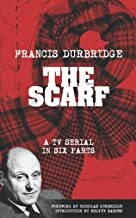
I've mentioned Melvyn Barnes on this blog previously, in connection with the good work he's done in relation to Francis Durbridge. He's currently collaborating with an enterprising small press, Williams & Whiting, to bring more of Durbridge's work, a worthy endeavour. I invited Melvyn to tell my readers more about this project:
'My fascination with Durbridge goes back to adolescence (of blessed memory) when I was glued to the radio and later to television in my determination not to miss the next instalment of the latest Durbridge serial. But Durbridge did not figure in the many years that I spent in writing books and articles about crime fiction, until the turning point of retirement from the day job provided more time to spend on research. So perhaps inevitably Durbridge once again took centre stage, particularly as this multi-media craftsman had been largely neglected by the historians of popular culture. And far worse than that, on the Internet he was misrepresented by inaccurate information that will doubtless remain in the ether forever.
Durbridge thus became my principal subject of research, the result being a self-published book Francis Durbridge: A Centenary Appreciation (2015). That was just the beginning, however, as it had become increasingly clear that Durbridge left innumerable unanswered questions about his works, the way in which he recycled plots, things written but never produced, and other aspects that needed to be investigated and if possible clarified. Indeed this presented a renewed challenge, requiring another lengthy period of research that led to the publication of a much larger book Francis Durbridge: The Complete Guide (Williams & Whiting, 2018).
So was this Case Closed? On the contrary, Francis Durbridge is never that straightforward and some bombshell revelations soon began to emerge. These arose from the fact that although he died in 1998 his widow lived for very many years afterwards, and understandably their two sons had long deferred sorting their father’s papers. But now they discovered that numerous original typescripts had survived, some of them never available as novelisations or recordings nor even produced in their intended form - be it radio, television or cinema film. Trumpet fan-fair - step forward the publisher Williams & Whiting, now contracted to transcribe and publish all of these typescripts as e-books and print-on-demand paperbacks.
My own role has involved validating, proof-reading and in particular writing Introductions for each book. So far I have written thirty-four Introductions, with increasing excitement because these scripts will gradually become an impressive set of uniform volumes. At the time of writing, those already published or imminent are – The Scarf(1959 television serial); Paul Temple and the Curzon Case (1948 radio serial); La Boutique (1967 radio serial); The Broken Horseshoe (1952 television serial); Three Plays for Radio Volume 1 (1945-46 Over My Dead Body, Mr Lucasand The Caspary Affair); Send for Paul Temple (the original 1938 radio serial); A Time of Day (1957 television serial); Death Comes to the Hibiscus(c.1942, an unproduced stage play) and The Essential Heart (1943 radio play), both written under the pseudonym Nicholas Vane; Send for Paul Temple(1943 stage play); The Teckman Biography(1953 television serial); Paul Temple and Steve (1947 radio serial); and Twenty Minutes from Rome (c.1954, an unproduced television play).
As indicated above there are many more to come, and for me it has been a labour of love. But I gather that Durbridge’s son Nicholas is now laboriously transcribing his father’s handwritten diaries – so who knows what new information might emerge?'
Thanks, Melvyn. I'll be posting more about these interesting books in due course.
March 14, 2022
William Hurt R.I.P.
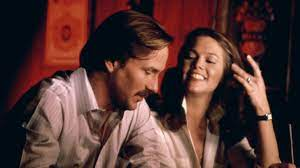
I was very sorry to learn of the death of William Hurt, at the age of 71, and following some years of ill-health. If you search references to him on this blog, you'll find a number of reviews of his films, most recently The Village, which I enjoyed and which were enhanced by his presence in the cast.
To me, though, he'll always be Ned Racine, in Body Heat, one of the most enjoyable crime films ever made. I loved the idea of the slick and slightly sleazy lawyer who, as his friend (played by Ted Danson) said, 'used his incompetence as a weapon'. I've met one or two lawyers like that in real life, but they didn't have Ned Racine's charm. In the photo above he is with Kathleen Turner, who made her name in the film.
Naturally, I referenced Ned in the Harry Devlin series, and I've watched Body Heat several times, always with relish. It's a great illustration of a story and film that is, on the surface, derivative, because it uses well-established tropes and ideas, yet makes something fresh of them. As for William Hurt, he was a superb actor with a truly impressive range.



